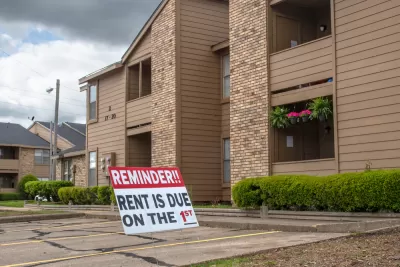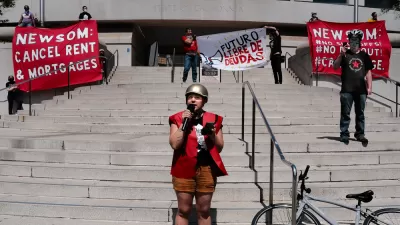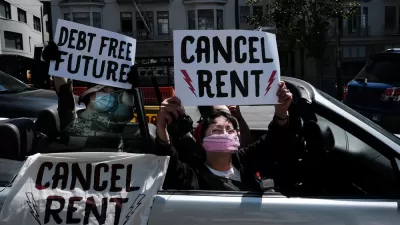The CDC's eviction moratorium will stay in place until at least June 30, 2021.

[Updated March 31, 2021] "The Centers for Disease Control and Prevention extended its federal moratorium on eviction for non-payment of rent until June 30," reports Anna Bahney.
"It marks the third time the deadline for lifting the ban has been pushed back. The CDC's order first went into effect in September and initially was set to expire at the end of 2020. But then in December, the protection was extended until January 31. As one of his first acts in office, President Joe Biden called on the CDC to extend the ban until March 31."
Bahney also notes that $50 billion in federal relief money has been approved for renters in the past two federal stimulus packages—the first while Donald Trump was still in office and the second the most recent American Rescue Plan Act.
Despite various eviction moratoria in place by the CDC and local and state governments around the country, many renters are still being evicted and renters are racking up debt that still threatens to destabilize the housing market and the larger economy. A Moody's Analytics report from January 2021 estimated that the nation's renters owed an estimated $57 billion in back rent.
The CDC has lost two recent court cases over the enforceability of the eviction moratorium, although both court decisions stopped short of repealing the moratorium. The U.S. Department of Justice is appealing both rulings.
FULL STORY: CDC extends eviction moratorium until June 30

Study: Maui’s Plan to Convert Vacation Rentals to Long-Term Housing Could Cause Nearly $1 Billion Economic Loss
The plan would reduce visitor accommodation by 25,% resulting in 1,900 jobs lost.

North Texas Transit Leaders Tout Benefits of TOD for Growing Region
At a summit focused on transit-oriented development, policymakers discussed how North Texas’ expanded light rail system can serve as a tool for economic growth.

Why Should We Subsidize Public Transportation?
Many public transit agencies face financial stress due to rising costs, declining fare revenue, and declining subsidies. Transit advocates must provide a strong business case for increasing public transit funding.

How to Make US Trains Faster
Changes to boarding platforms and a switch to electric trains could improve U.S. passenger rail service without the added cost of high-speed rail.

Columbia’s Revitalized ‘Loop’ Is a Hub for Local Entrepreneurs
A focus on small businesses is helping a commercial corridor in Columbia, Missouri thrive.

Invasive Insect Threatens Minnesota’s Ash Forests
The Emerald Ash Borer is a rapidly spreading invasive pest threatening Minnesota’s ash trees, and homeowners are encouraged to plant diverse replacement species, avoid moving ash firewood, and monitor for signs of infestation.
Urban Design for Planners 1: Software Tools
This six-course series explores essential urban design concepts using open source software and equips planners with the tools they need to participate fully in the urban design process.
Planning for Universal Design
Learn the tools for implementing Universal Design in planning regulations.
City of Santa Clarita
Ascent Environmental
Institute for Housing and Urban Development Studies (IHS)
City of Grandview
Harvard GSD Executive Education
Toledo-Lucas County Plan Commissions
Salt Lake City
NYU Wagner Graduate School of Public Service





























